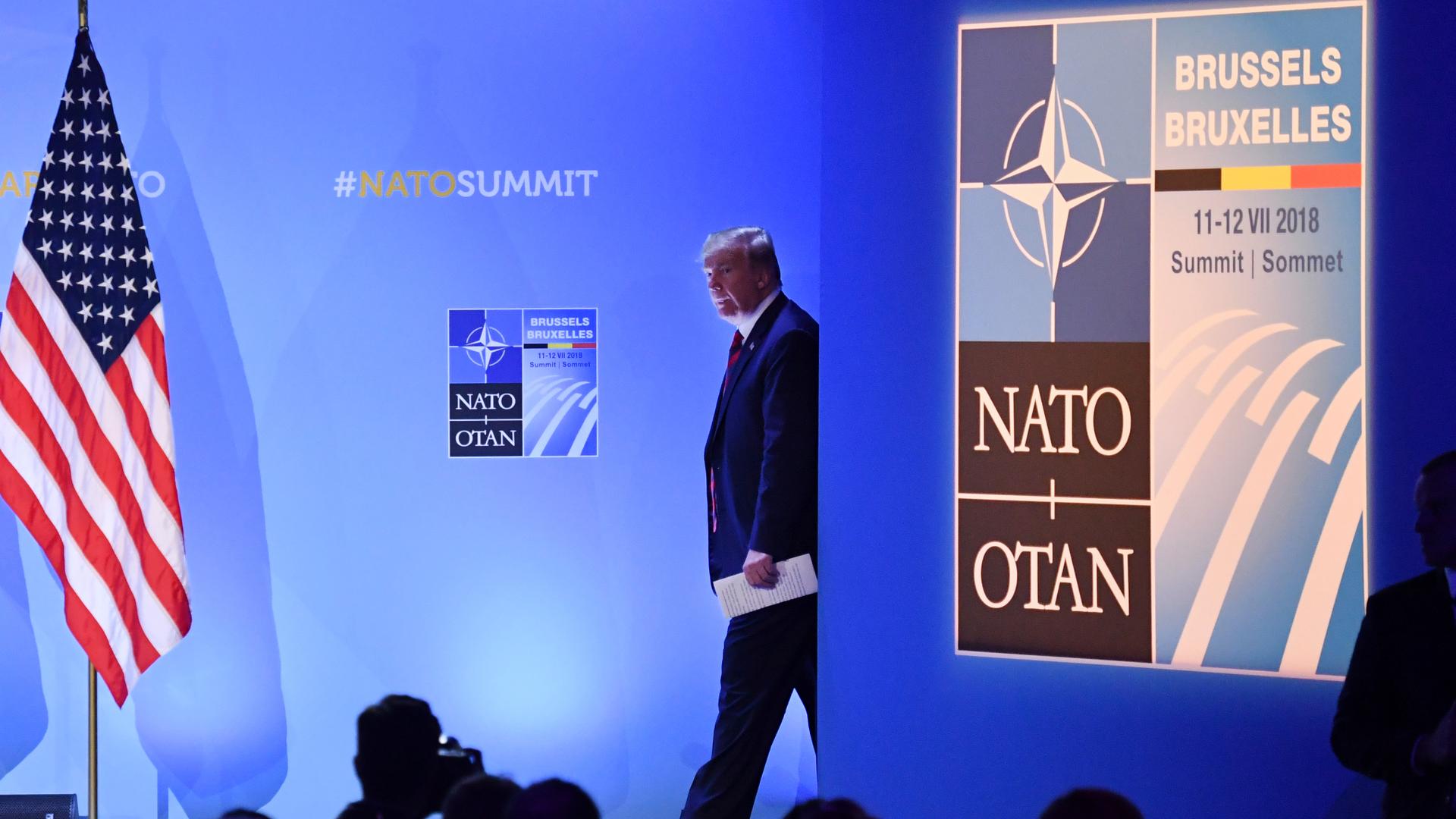US President Donald Trump’s aggressive approach towards NATO doesn’t serve its own long-term interests.
There is growing concern that US President Donald Trump wants to dismantle NATO, but realistically that’s not what he wants. What Trump wants is to stop the free-riding he alleges that large European members enjoy as part of the alliance. However, his strategy is dangerous and could lead to the weakening of NATO’s collective security mechanism.
Trump, even before he took office, was a staunch critic of how things work in NATO. He expressed his views in a tweet saying that the system is gravely unfair to the US interests. “Massive amounts of money spent on protecting other countries, and we get nothing but trade deficits and losses. It is time that these very rich countries either pay the United States for its great military protection or protect themselves,” he added.
During the NATO Summit in June 2018, Trump accused his allies of not sharing the burden and urged them to not only spend at least 2 percent of their GDPs on defence—a goal set up by NATO members in 2014 after the Russian annexation of Crimea—but to increase this participation to 4 percent, an amount that even the US does not contribute.
However, the critique of NATO from the US president is not something new. President Obama and his predecessor President Bush also asked member states to increase their spending on defence. Not only these two former presidents but even President Eisenhower pressured NATO members to pay their fair share of the collective security by saying that the Europeans are “making a sucker out of Uncle Sam.”
The concept of the free ride was first developed by Mancur Olson and Richard Zeckhauser in their 1966 article “An Economic Theory of Alliances.”
According to the theory, defence in an alliance is a pure public good from which no member can be excluded and there is no rivalry among the members of the alliance in benefiting from this public good.
The largest member of the alliance bears a disproportionately large share of the burden while smaller members have an incentive to free-ride, meaning that they tend to contribute less to the public good. The reason for such a situation is because the largest member has greater global interests compared to those of smaller members. Yet, the largest member willingly covers the cost of free riding by smaller members. The equation boils down to basic mathematics. Even though the contribution of the rest is smaller than the largest member’s contribution, there is still a contribution which reduces the overall cost of defence for the largest member.
Thus, for the largest member, the problem is not the smaller members’ free ride but that of the middle powers in the alliance.
In NATO, the US does not care much about Luxembourg’s free ride as much it does for countries like Germany, Italy and Spain. That is why President Trump consistently points to Germany when the issue is raised. The US can easily cover the cost of Luxembourg’s free ride which would require a tiny increase in US spending on defence but when you add Germany and other midsize countries into the equation, it becomes a problem.
For the first time in NATO’s history, one might say, American leadership of the alliance has been interrogated by a sitting US president. Such a situation, in turn, makes other allies in NATO question the commitment of the US to defend the alliance if an attack launched against one of the members. This is exactly what concerned the former Polish Defence and Foreign minister, Radek Sikorski, “We have no idea what president Trump would do in a crisis with Russia.”
If the US wants to categorically eradicate free-riding in NATO, the only way is to credibly commit that it would not invoke Article 5 for members who don’t abide by the rules of the alliance. Article 5 is the most distinctive characteristic of NATO—the most successful military alliance in the history—forming the foundation of the collective security mechanism.
President Trump, during an interview, has shaken this foundation when he criticised the mutual defence compact of NATO, saying that it is confusing and asking why the US should defend a small country like Montenegro. This raised eyebrows among NATO allies.
German Chancellor Angela Merkel and French President Emmanuel Macron, in turn, suggested that this might be the right time to establish an indigenous European Defence Union among Europeans to complement NATO. “The times when we could rely on others are over,” Merkel added.
President Trump does not want to demolish NATO as he is well aware of that it serves US interests globally more than any other member’s interest. His strategy is to coerce its members so that they will share a greater burden of the collective defence.
The Trump administration knows that this is the only way to stop free-riding in the alliance. By doing so, the US can reserve additional assets and utilise it elsewhere, like East Asia.

Author: Alpaslan Oguz
Alpaslan Oguz is a Deputy Researcher at TRT World Research Centre.
Source










Discussion about this post